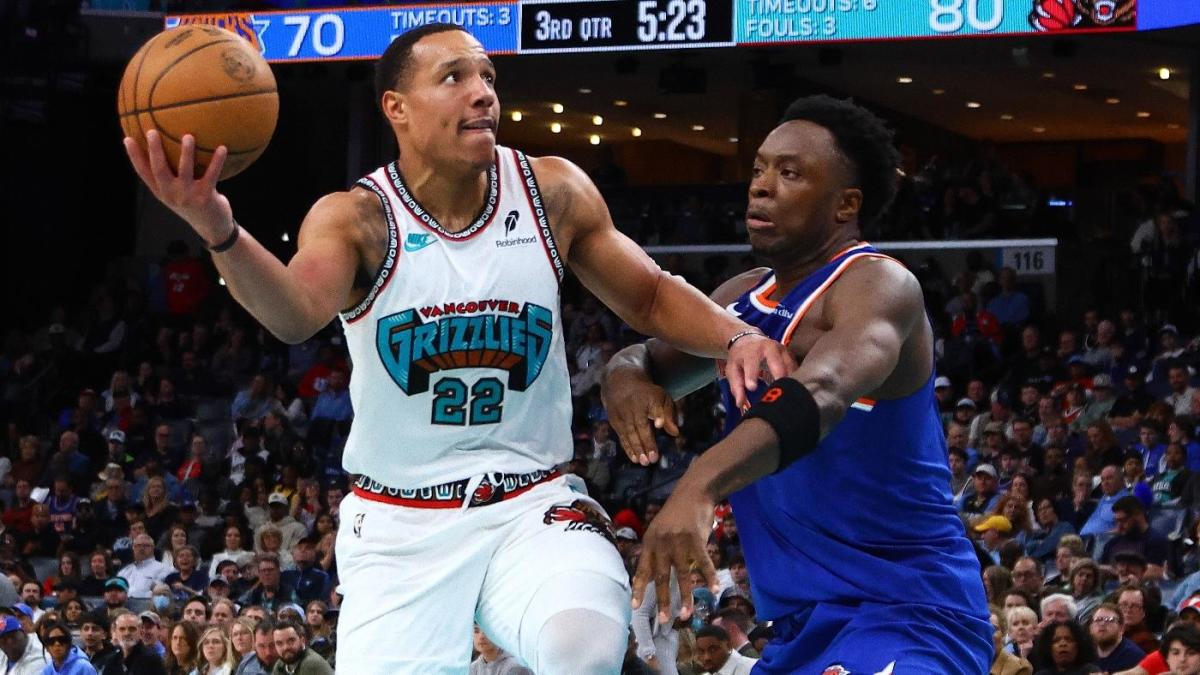Navigating the Desmond Bane Trade Through the Lens of AI: Insights and Implications
Artificial intelligence (AI) offers valuable frameworks to understand complex decision-making scenarios like the Desmond Bane trade between the Memphis Grizzlies and the Orlando Magic. This blockbuster NBA deal, rich with layers of strategic calculation, can be dissected through AI principles such as predictive modeling, risk assessment, and optimization of resource allocation, revealing deeper insights into how modern sports organizations navigate talent and asset management.
The Complexity of the Trade: An AI Perspective
In essence, this trade involves balancing immediate performance gains against long-term growth, a classic exploration of trade-offs that AI models frequently tackle. Desmond Bane, an elite sharpshooter with strong all-around stats, represents a high-confidence variable with predictable positive impact—much like a reliable feature in a machine learning dataset. His consistent shooting percentages and multi-faceted gameplay serve as stable inputs into Orlando’s “performance prediction” model, enhancing their likelihood of postseason success.
Conversely, Memphis’s return package, rich in unprotected draft picks and developmental players like Cole Anthony, embodies a set of high-variance variables. These draft picks are probabilistic assets, akin to inputs with uncertain outputs requiring sophisticated evaluation algorithms to estimate their eventual value based on historical draft outcomes, player development trajectories, and market conditions.
Strategic Asset Management Through Predictive Analytics
Memphis’s decision to prioritize future draft capital and young talent mirrors portfolio optimization strategies in AI-driven finance models. By acquiring four unprotected first-round picks and a swap option, Memphis increases the diversity and potential upside of its “asset portfolio,” effectively hedging against the unpredictability of player development and season outcomes.
AI techniques such as reinforcement learning could be analogized here, where Memphis receives feedback over multiple “iterations” (seasons) to maximize the cumulative value of these picks—either by drafting high-potential prospects or by packaging these assets in future trades to optimize roster construction. Their acquisition of Caldwell-Pope and Cole Anthony offers a blend of immediate utility and developmental prospects, akin to including both short-term gains and long-term investments in a model seeking balanced returns.
Orlando’s “Win-Now” Model Aligned with AI Optimization Goals
Orlando’s approach, heavily investing in an established player like Bane, aligns with an AI model prioritizing immediate reward maximization. This is reminiscent of algorithms tuned for exploitation over exploration—favoring proven, high-yield inputs to accelerate performance improvements rapidly rather than relying on uncertain developmental prospects.
However, this approach carries inherent risk, paralleling AI models sensitive to overfitting: the Magic’s success is tightly coupled with Bane’s ability to integrate seamlessly and perform consistently, much like a model’s accuracy depending on the reliability of a critical feature. The cost of multiple unprotected picks restricts Orlando’s future flexibility, comparable to a model’s reduced adaptability for future data shifts.
Risk Evaluation and Uncertainty Management
AI excels at managing uncertainty and quantifying risk, which is central to evaluating this trade’s fairness and future impact. The value of unprotected first-round picks depends heavily on Orlando’s performance trajectory, introducing a dynamic feedback loop. If Orlando improves quickly, Memphis’s picks decline in draft position value, underscoring an inverse relationship between immediate success and future asset value.
Memphis’s 2029 pick swap adds an additional layer of strategic complexity—effectively a conditional option enhancing their ability to capitalize on future market conditions. From an AI standpoint, this resembles embedding contingencies and adaptive decision rules to optimize outcomes under uncertain, evolving scenarios.
Integration of Human and AI Decision-Making in Modern NBA Trades
While AI provides powerful conceptual tools for dissecting and modeling trades like this, human factors—coaching philosophy, player chemistry, fan base expectations, and organizational vision—remain crucial. The Memphis-Grizzlies and Orlando-Magic decision-makers embody hybrid decision-making frameworks where data-driven insights inform, but don’t solely dictate, choices.
Advanced sports analytics teams deploy AI and machine learning models as decision-support systems, interpreting probabilistic outcomes and simulation results while balancing intangibles that models struggle to quantify. This trade exemplifies how modern NBA front offices integrate analytics with experience and strategic intuition to navigate uncertainty.
Final Thoughts: AI Illuminates But Does Not Dictate Outcomes
Viewing the Desmond Bane trade through the lens of AI provides a structured understanding of the complex interplay between risk, reward, and strategic timing in NBA roster management. Memphis’s asset accumulation echoes portfolio optimization and long-term value maximization strategies, while Orlando’s acquisition of an elite scorer reflects an exploitation-focused, win-now algorithmic approach.
Success for both franchises hinges on execution beyond raw data—on Memphis’s ability to translate draft capital into impactful players or trades, and on Orlando’s capacity to leverage Bane’s shooting to catalyze a competitive leap. AI tools sharpen insight into potential scenarios and probabilities but remain one dimension of a multidimensional strategic game where unpredictability and human judgment reign supreme.

